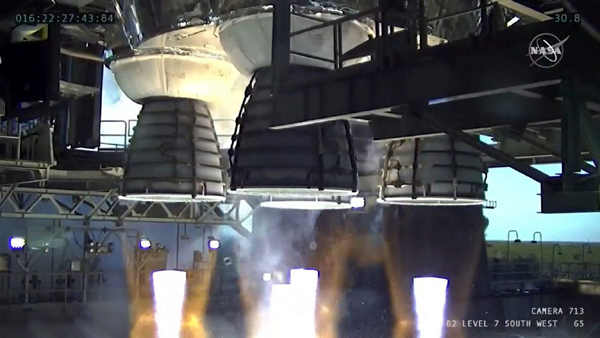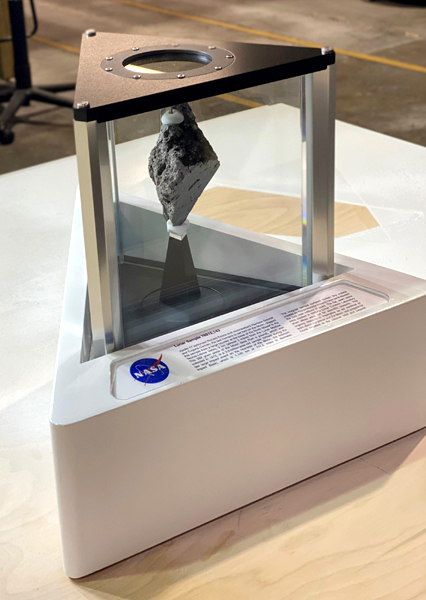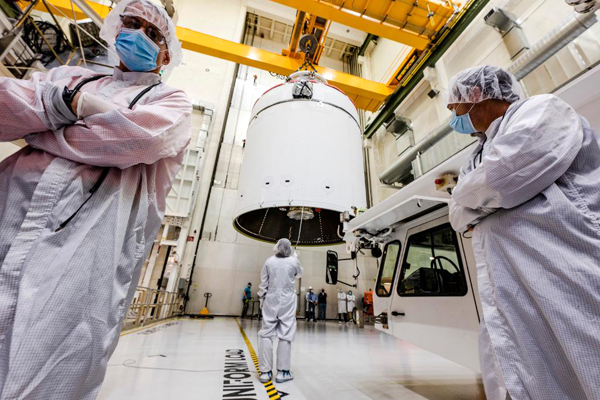 Axiom Space
Axiom Space Reveals Historic First Private Crew to Visit International Space Station (Press Release - January 26)
HOUSTON –
Axiom Space
Axiom Space Reveals Historic First Private Crew to Visit International Space Station (Press Release - January 26)
HOUSTON – Axiom Space on Tuesday announced its crew for humankind’s first flight of a group of private individuals to a Low-Earth Orbit destination – the first-ever entirely private mission proposed to fly to the International Space Station
(ISS).
The proposed historic
Axiom Mission 1 (Ax-1) will consist of: former NASA astronaut and Axiom vice president Michael López-Alegría as commander; American entrepreneur and non-profit activist investor Larry Connor as pilot; Canadian investor and philanthropist Mark Pathy; and impact investor and philanthropist Eytan Stibbe of Israel.
López-Alegría, who flew to space four times over a 20-year, record-setting career at NASA and last visited the ISS in 2007, will become the first person to ever command both a civil and a commercial human spaceflight mission. Connor will be the first private mission pilot in the annals of spaceflight.
Pathy will be Canada’s 11th astronaut. Stibbe, a close personal friend of
Columbia astronaut Ilan Ramon and a former Israeli Air Force pilot, will be Israel’s second. Both will fly as mission specialists.
“This collection of pioneers – the first space crew of its kind – represents a defining moment in humanity’s eternal pursuit of exploration and progress,” López-Alegría said. “I know from firsthand experience that what humans encounter in space is profound and propels them to make more meaningful contributions on returning to Earth. And as much as any astronaut who has come before them, the members of this crew have accomplished the sorts of things in life that equip them to accept that responsibility, act on that revelation, and make a truly global impact.
“I look forward to leading this crew and to their next meaningful and productive contributions to the human story, both on orbit and back home.”
Former NASA astronaut Peggy Whitson will serve as Ax-1’s backup commander, while John Shoffner of Knoxville, Tenn. is the backup mission pilot. Carrying a time-honored approach over from the civil spaceflight era to the private one, the prime and backup crews are slated to go through Axiom’s full training program together.
Axiom Mission 1 (Ax-1)
The proposed Ax-1 mission will include the crew living aboard the U.S. segment of the ISS for approximately eight days, participating in research and philanthropic projects.
Connor, who has founded and led organizations in the real estate, fintech, and non-profit sectors, will collaborate with Mayo Clinic and Cleveland Clinic on research projects. He also intends to provide instructional lessons to students at Dayton Early College Academy in his hometown of Dayton, Ohio.
Pathy is collaborating with the Canadian Space Agency as well as the Montreal Children’s Hospital, who are helping identify health-related research projects that could be undertaken during the mission.
Stibbe plans to conduct scientific experiments of Israeli researchers and entrepreneurs coordinated by the Ramon Foundation and the Israel Space Agency at the Ministry of Science & Technology and to undertake educational activities from orbit to inspire Israeli children, youth, and educators.
“We sought to put together a crew for this historic mission that had demonstrated a lifelong commitment to improving the lives of the people on Earth, and I’m glad to say we’ve done that with this group,” Axiom Space President & CEO Michael Suffredini said. “This is just the first of several Axiom Space crews whose private missions to the International Space Station will truly inaugurate an expansive future for humans in space – and make a meaningful difference in the world when they return home.”
Axiom Space is the commercial space industry’s only full-service orbital mission provider for private and national astronauts. Its all-inclusive offering provides services such as training, transportation, mission planning, hardware development, life support, medical support, crew provisions, safety and hardware certifications, on-orbit operations, and overall mission management.
Precursor to Commercializing Low-Earth Orbit (LEO)
With the first launch opportunity no earlier than January 2022 aboard a SpaceX
Crew Dragon, Ax-1 is the first of Axiom Space’s “precursor” private astronaut missions to the ISS – subject to approval from NASA and its international partners. Axiom Space and NASA are working together on the final approvals of a formal Basic Ordering Agreement
(BOA) to enable private astronaut missions, with further discussions underway to agree on and authorize the Ax-1 mission profile.
Houston-based Axiom intends to offer private and national astronaut flights to ISS at a rate of up to two per year to align with flight opportunities as they are made available by NASA, while simultaneously constructing its own privately-funded space station. The
Axiom Station’s modules will be attached to the
Harmony node of the ISS beginning as early as 2024, a commercial expansion of the orbiting lab for which NASA selected Axiom in January 2020.
At ISS retirement, the Axiom Station will separate to form the world’s first free-flying, privately developed, internationally available space station – the central node of a near-future network of research, manufacturing, and commerce in LEO.
Source: Axiom Space
****
 Axiom Space
Axiom Space























